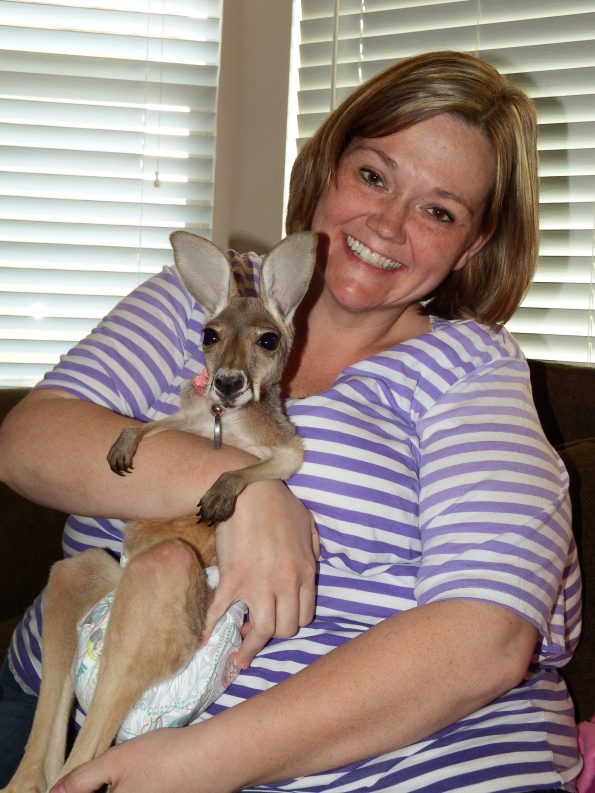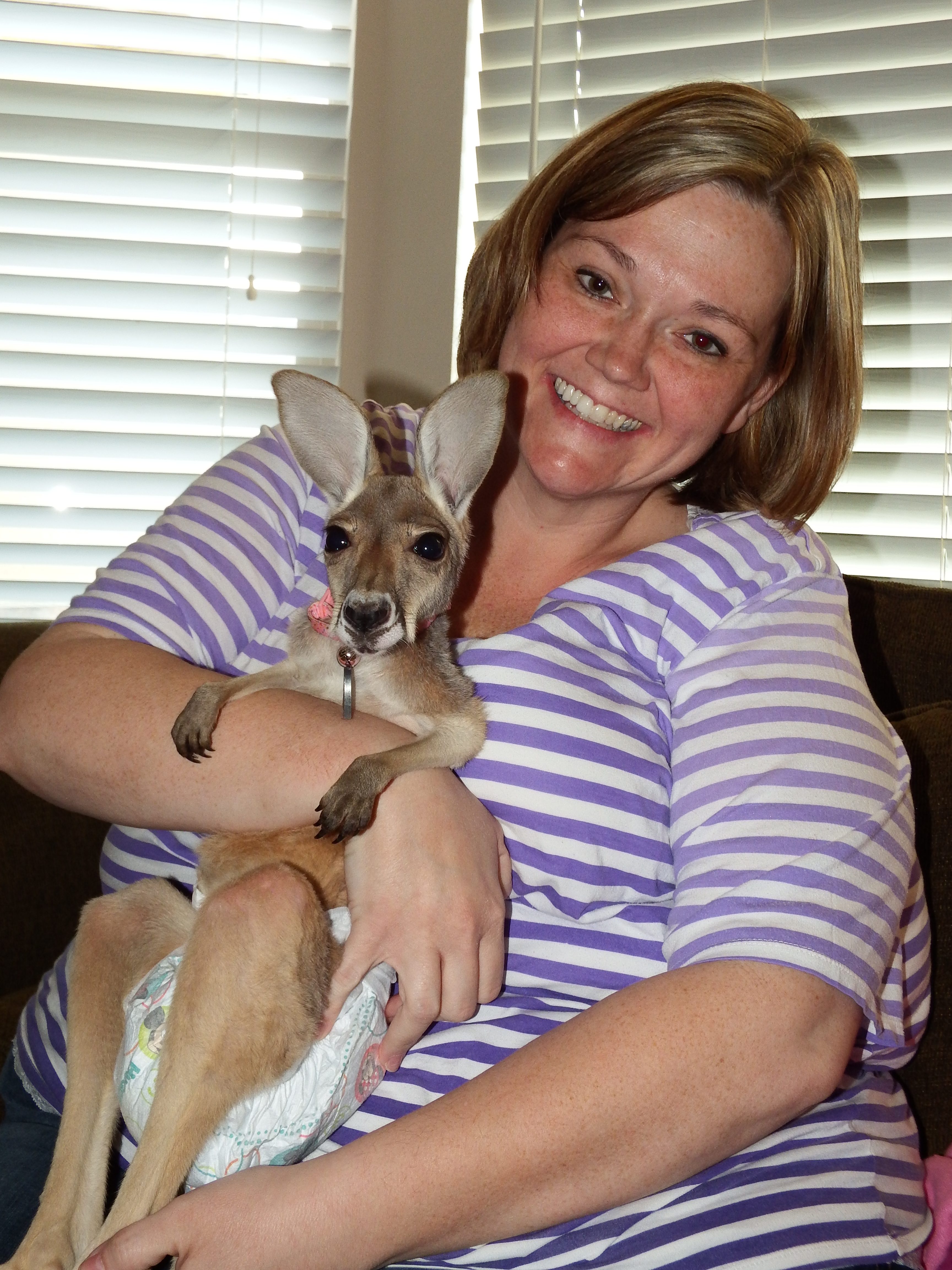
At first glance, the furry, narrow face with the over-sized ears and the black and white muzzle peering out of Amber Peacock’s shoulder bag resembles a fawn, or perhaps a fox. When the little creature hops out of the bag, however, it looks more like a skinny, long-tailed rabbit on skis. But the tiny marsupial with the doe-eyes, pink collar and disposable diaper (with a hole in it to accommodate her long, muscular tail), is none of these things. She is, in fact, a four-month-old great red kangaroo named Lulu.
Amber is the Recreational Therapy Director at the Salt Lake Veteran’s Home on the VA campus. She is also Lulu’s part-time, surrogate mom. Unlike most kangaroo mothers, Amber doesn’t have a pouch of her own, so she transports Lulu to work in a cloth grocery bag. Lulu doesn’t seem to know the difference. As a therapy animal, she simply looks forward to visiting her many friends at the Veteran’s Home and delighting everyone she meets along the way.
In the world of therapy animals, dogs lead the pack, followed by cats and other small mammals. Even reptiles play a role. Horses and dolphins are highly effective in animal-assisted therapies (AAT), although they’re not exactly suited to a clinical environment like the VA. But a kangaroo is a novelty, especially in Utah, and Lulu is a hit with patients.
According to Amber, “A therapy animal just gives comfort to humans as opposed to a service animal that is trained for a specific task, such as sensing when a seizure is coming on, or a service dog who helps the blind.” Amber isn’t sure whether a kangaroo has ever been trained as a service animal.
Everyone knows that dogs are naturally empathetic, sensing physical ailments and emotional needs in humans, but what about kangaroos? Amber says that Lulu “will hop up and down the halls and she’ll jump on the bed with someone and take a nap. If we have a resident who is nearing the end-stages of life, Lulu tends to migrate toward that person as well.”
“There’s one lady who wasn’t able to fulfill her role as a mother,” Amber continues, “so when she gets Lulu, it’s very therapeutic for her. She’s able to cuddle her and rock her and feed her a bottle, and she calls Lulu ‘her baby.’ We also have a big, burly guy whom you wouldn’t imagine would want to cuddle up with a kangaroo, but he really enjoys spending time with her.”
Lulu was born in Austin, Texas. Her food and diapers are paid for by a corporate donation, and licensure is granted by the Department of Agriculture. She is the latest in a series of therapy kangaroos, which have a service life of approximately two years.
“When they become teenagers and go through puberty,” says Amber, “that’s when they can become aggressive.” Like other therapy kangaroos before her, Lulu will eventually get too large and unpredictable to interact with patients. So where does a retired adolescent kangaroo go to live out the rest of its days, which can be as long as 15 years? In Utah, they go to a kangaroo ranch in Springville.
When it’s time to go home, Amber merely opens Lulu’s bag and she obediently hops inside. But this bouncing baby roo will be back to visit her friends again tomorrow. “When you look at the residents’ faces, the connection they make with her is unbelievable,” Amber says. “She’s able to fill the void many of them feel by not being able to have pets of their own.”






